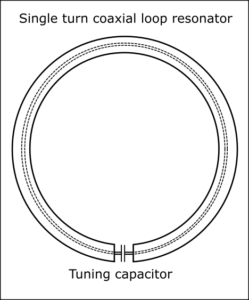My friend Carlos, VK1EA, made some measurements of an MFJ-1786 SUPER HI-Q 36″ (0.914m) DIA 10-30 MHz loop at 10.1MHz.
This article presents some modelling and analysis of the antenna principally to estimate its performance.
The loop was located at 2m above natural ground away from other conducting objects.
He tuned the loop for minimum VSWR at around 10.1MHz and took a sweep with a EU1KY antenna analyser looking through 0.5m of RG223 50Ω cable saving the results to a s1p file which was imported to Antscope.
Measurement of the real antenna
Here is the impedance plot (excuse the |Z| plot as it is Rigexpert’s concession to hams who do not understand impedance and I cannot disable it).
Above, the impedance plot. The cursor is at point of minimum VSWR, and the associated R and X values at the measurement point are not very useful. Continue reading MFJ-1786 loop antenna – measurements and NEC-4.2 model at 10.1MHz











